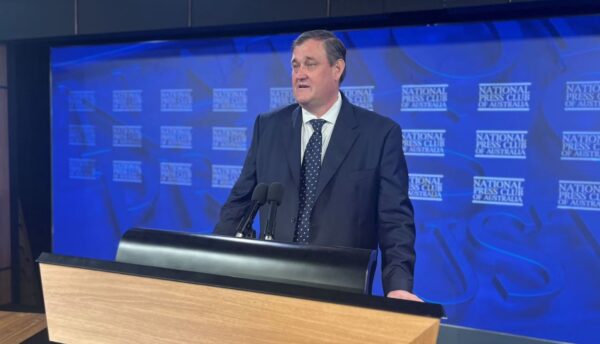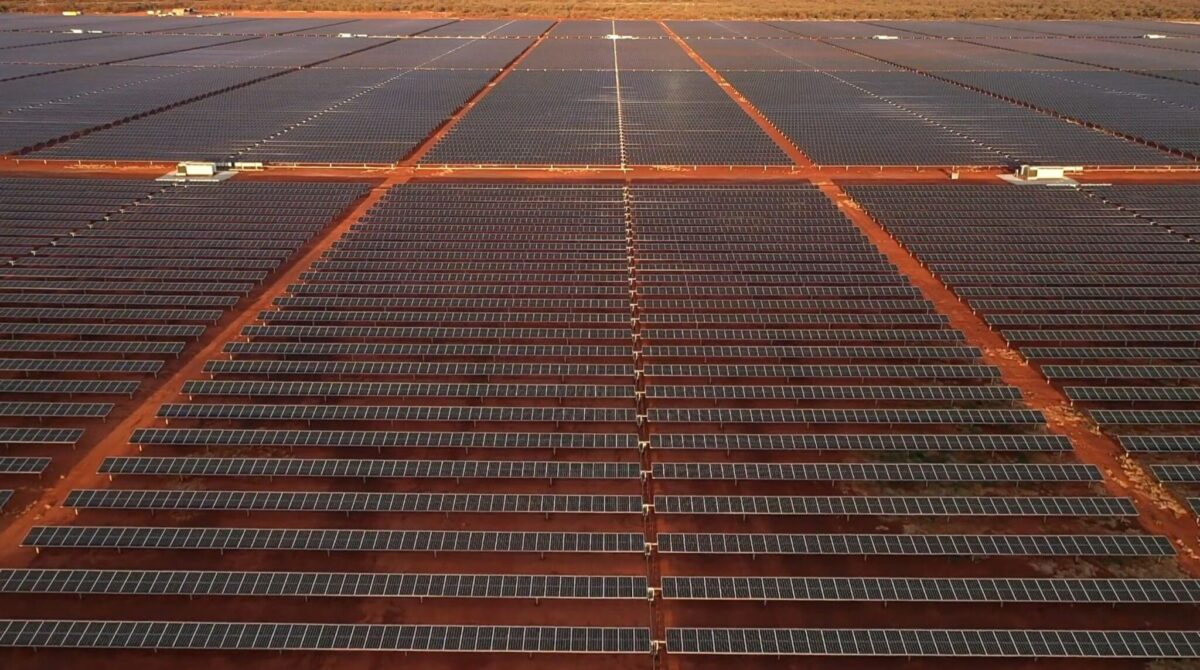Alinta Energy Chief Executive Jeff Dimery has declared that despite some “recent great strides and clear direction” from the federal government, Australia’s energy transition – including achieving 82% use of renewable energy across the power system by the end of the decade – is getting harder, not easier.
Dimery said the investment outlook for large-scale renewables in Australia is “challenging” with rising capital costs, labour costs and transmission costs stalling investment in essential large-scale solar, wind and firming capacity.
“Developers are pulling back on commitments to build large-scale renewables because they don’t want to lock in high prices that may not be recouped,” he said, noting that in the early era of renewables, Australia had the perfect investment climate for wind, solar, and pumped hydro.
“It could’ve been seen as the goldrush for renewable generation, and certainly we saw no shortage of companies trying get a piece of the action,” he said.
“But, very quickly, projects started to fail, loss factors increased, and investment cases started to crumble.”
Speaking at the National Press Club in Canberra this week, Dimery said Alinta developed and built the first big battery in Australia in 2017 – a 35 MW / 11 MWh energy storage system attached to the company’s Newman gas-fired generator in the Pilbara region of West Australia – for about $1.5 million (USD 980,000) per MW.
“Right now, we’re building another one that will cost roughly $1.7 million per MW,” he said. “That’s up.”

Image: Alinta Energy
Dimery also pointed to projected wholesale power prices of $58 per MWh as another roadblock for investment in large-scale renewables, saying at that price “I can’t build anything to meaningfully prepare for coal to come out of the system.”
“I can’t build more solar, because we already have a solar glut in the middle of the day, which is sending spot prices deeply negative,” he said.
“I would also be very wary about building new wind, because the margins would be slim to non-existent, and any curtailment, which is a growing problem, could be disastrous.”
“And I certainly couldn’t reach financial close on pumped hydro without a clear price signal or support, which, in our view, will be critical technology in our future blended energy mix.”
A founding member of Australia’s Clean Energy Council (CEC), Dimery said in addition to rising costs, subsidies for rooftop solar are also undermining the economics of new and existing large-scale renewables.
“We have a glut of daytime rooftop solar energy, at the same time as 95% of all large-scale renewables are getting curtailed, basically switched off, in some hours on high rooftop solar days,” he said.
“The percentage of all energy produced by large-scale renewables that was curtailed increased from 10% in the last quarter of 2022, to 13% in the last quarter of 2023.
“Now, you might think ‘3%, who cares’? Well, boards care, investors care, and developers care. No one wants to lose 13% of their output, and no one dares think just how much more could be lost. That could be the difference between profitable and unprofitable.”
Dimery said it’s time for a realistic discussion about the challenges facing the energy transition, saying Australia had secured all the “easy wins” that were available and it’s mostly the hard wins that lay ahead.
“Getting over the hump of this very difficult part of the transition is going to require partnerships in all directions,” he said.
Dimery said governments need to maintain clear public policy, while funding via the federal government’s Capacity Investment Scheme and state government contributions is becoming essential for large-scale renewables. He also said the deployment of new private capital will be critical if the country’s clean energy goals are to be achieved.
“We know what energy mix we need to blend together today, we just need to get on with it,” he said.
“Australia has made tremendous progress on the transition so far, and we’re optimistic about the industry’s ability to deliver more, if the settings are right.”
This content is protected by copyright and may not be reused. If you want to cooperate with us and would like to reuse some of our content, please contact: editors@pv-magazine.com.









By submitting this form you agree to pv magazine using your data for the purposes of publishing your comment.
Your personal data will only be disclosed or otherwise transmitted to third parties for the purposes of spam filtering or if this is necessary for technical maintenance of the website. Any other transfer to third parties will not take place unless this is justified on the basis of applicable data protection regulations or if pv magazine is legally obliged to do so.
You may revoke this consent at any time with effect for the future, in which case your personal data will be deleted immediately. Otherwise, your data will be deleted if pv magazine has processed your request or the purpose of data storage is fulfilled.
Further information on data privacy can be found in our Data Protection Policy.